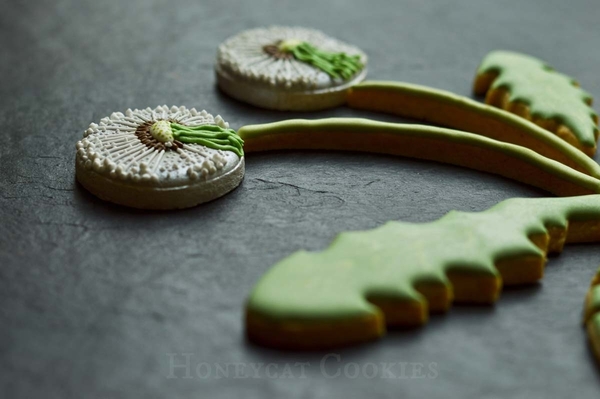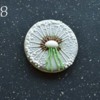 It's the height of summer, and we're experiencing a record-breaking heat wave here in England. All the grass has turned brown, the ground is dry, and those of us who can't take the heat are staying in the shade all day, only to venture out in the cool of the evening as the sun goes down, with a glass of wine in hand! But even this endless dryness has beauty in it. Dry grass stems and seed heads are delicate and lovely in the twilight when they've not been whipped away by wind and rain.
It's the height of summer, and we're experiencing a record-breaking heat wave here in England. All the grass has turned brown, the ground is dry, and those of us who can't take the heat are staying in the shade all day, only to venture out in the cool of the evening as the sun goes down, with a glass of wine in hand! But even this endless dryness has beauty in it. Dry grass stems and seed heads are delicate and lovely in the twilight when they've not been whipped away by wind and rain.
I particularly love the perfect globes of dandelion seeds that seem luminous in the waning evening light. Here in the UK, they're known as "clocks", and every child knows that if you need to find out the time, simply pick a clock, and see how many times you need to blow on it to release all the seeds - the number of puffs tells you the hour!
- Cookie dough of choice
- Cookie cutters (2-in/5-cm circle and feathers of various sizes), or scalpel to hand-cut dough
- Royal icing: (I use Sugarflair to colour most of my royal icing.)
- Flood-consistency royal icing in pale grey, mid-green, and light green
- Soft piping-consistency royal icing in cream and white
- Stiff piping-consistency royal icing in dark brown and mid-green
- Piping bags and PME #3, #2, #1.5, #1, and #0 tips (or equivalents; or use tipless bags/bottles as you prefer)
- White and green edible food colouring (I used AmeriColor, as it dries well when used as paint.)
- Food-use-only paint brushes
- White lustre dust (I used Rainbow Dust "Edible Silk" in Pearl White.)
- Dark green and light green petal dusts (optional; I used Rainbow Dust "Plain and Simple" in Autumn Green and Citrus Green.)
- PME #23 or #24 tip (i.e., small calligraphy tip)
- Food-grade cushion pads, to support cookies (optional)
Step 1: Cut and bake dandelion seed heads, leaves, and stems
For one dandelion plant, you will need two circle cookies and a selection of leaves and stems of different sizes. For the leaves, cut out the basic shapes using your feather cookie cutters; then use the pointed end of the cutter to snip out small shapes along the length of the cookie, leaving behind a rounded end and the sharp points characteristic of a dandelion leaf. I also experimented with hand-cutting with a scalpel to create more curved leaves. To create the stems, I simply cut a feather cookie, laid the cutter back over it, but shifted it to one side by about 1/4 inch (0.6 centimeter), and cut a slice off the edge. I made a few of these long, thin cookies in case of breakage. Bake your cookies as directed in your recipe, and cool completely before proceeding.
Step 2: Flood seed heads and leaves
Using pale grey flood-consistency royal icing and a PME #3 tip (or equivalent), flood the circles (or seed heads). Set them aside to dry thoroughly (a few hours in a dehydrator or overnight). Flood the stems and leaves with mid-green flood-consistency royal icing and a PME #2 or #1.5 tip (or equivalent). Immediately pipe delicate veins along the leaves using light green flood-consistency royal icing and a fine PME #1 tip (or equivalent). The veins should settle into the mid-green icing underneath.
Step 3: Paint and dust seed heads; start detailing
1. Paint the edges of the grey circles with white food colouring.
2. Using a clean, dry paint brush, dust the edges of the circles with white lustre dust, and the centres with dark green petal dust to create a "smudge" of green.
3. Using cream soft piping-consistency royal icing, pipe an oval blob in the centre of the green smudge. Make it nice and puffy, and immediately dry it in front of a fan (or in a dehydrator) to prevent craters from forming. Repeat for the second circle.

Step 4: Pipe more details on seed heads
4. Once the centre blob has dried, pipe little elongated seeds at irregular intervals around its perimeter. Use dark brown stiff piping-consistency royal icing and a PME #1 tip (or equivalent).
5. Using a PME #0 tip (or equivalent) and white soft piping-consistency royal icing, pipe straight lines radiating out from each seed tip to the edge of the cookie.
6. Using the same white royal icing and tip, pipe a little dot at the end of each line.
Repeat Step 4 for the second circle.

Step 5: Pipe even more details on seed heads
7. Continue to pipe small white dots between the lines, keeping them larger toward the edge of the cookie and smaller toward the centre.
8. Using mid-green stiff piping-consistency icing and a PME #23 or #24 fine calligraphy tip, pipe wrinkly green "ribbons" cascading down from the oval to the edge of the cookie. Let these ribbons dry.
9. Pipe another layer of green ribbons on top of the first layer to form a thick cluster.
Repeat Step 5 for the second circle.
Step 6: Paint final details
Using green edible food colouring, paint fine dots on the ovals on each seed head. Your dandelion clocks are complete!
Step 7: Dust leaves and stems, and box cookies
If you wish, use dark and light green petal dusts to shade the leaves and the green ribbons in the centre of the seed heads.
As the stems are fragile, I attached the cookies to a square of chocolate box-style cushion padding, cut to fit a small window-box. (I used a little leftover royal icing as "glue", and piped small icing dots under each cookie.) Done up with tags and ribbon, this dandelion-filled box makes a lovely, delicate, and unique edible gift!

 Lucy Samuels is the owner of UK-based Honeycat Cookies. Originally with an art-based career in mind, Lucy attended art college for a year after school but switched to nursing where she spent twenty years specializing in cardiology. After becoming a stay-at-home mom to her daughter Jess, Lucy experimented with a range of crafts, alighting upon decorative cookies almost by accident. In late 2011, she was persuaded to start her business Honeycat Cookies following several requests to place orders. She set about learning the craft from books, the internet, and trial and error. Lucy has a YouTube channel as well as a blog, Honeycat Cookies, that document some of her wider adventures in confectionery.
Lucy Samuels is the owner of UK-based Honeycat Cookies. Originally with an art-based career in mind, Lucy attended art college for a year after school but switched to nursing where she spent twenty years specializing in cardiology. After becoming a stay-at-home mom to her daughter Jess, Lucy experimented with a range of crafts, alighting upon decorative cookies almost by accident. In late 2011, she was persuaded to start her business Honeycat Cookies following several requests to place orders. She set about learning the craft from books, the internet, and trial and error. Lucy has a YouTube channel as well as a blog, Honeycat Cookies, that document some of her wider adventures in confectionery.
Photo credit: Lucy Samuels
Note: What's New, Honeycat? is a bimonthly Cookie Connection blog feature written by Lucy Samuels, which pushes the cookie envelope every other month with innovative cookie design ideas and tutorials. Its content expresses the views of the author and not necessarily those of this site, its owners, its administrators, or its employees. To catch up on all of Lucy's past posts, click here.















Comments (9)